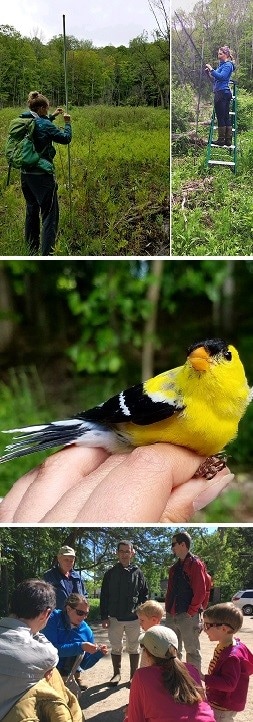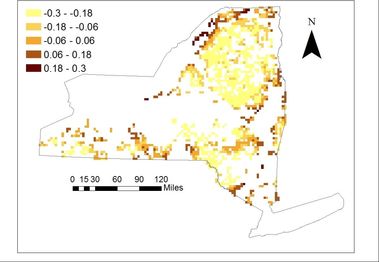 Top: Michelle Stantial (left) and Alison Kocek (right) set up mist nets. Center: An American goldfinch at the Baltimore Woods MAPS station. Bottom: Alison Kocek talks about bird banding with visitors, as Dr. Cohen looks on.
Top: Michelle Stantial (left) and Alison Kocek (right) set up mist nets. Center: An American goldfinch at the Baltimore Woods MAPS station. Bottom: Alison Kocek talks about bird banding with visitors, as Dr. Cohen looks on. The effort has been led by OAS President Alison Kocek and OAS Board Member Michelle Stantial, both of whom are Ph.D. candidates in the Cohen lab. On weekends throughout the summer, Alison and Michelle, with a team of volunteers that includes Dr. Cohen, work from sunrise to noon banding and taking measurements on birds at the Nature Center. They will report their data to MAPS, where it will be incorporated into statistical models of survival and reproductive success. In this way, we hope to understand how bird populations at Baltimore woods will change over time, and to contribute to scientists' understanding of how we might reverse declines that are currently observed for many of our avian species across North America.

 RSS Feed
RSS Feed
